This article describes steps to hide or show the Windows Security app Account Protection section in Windows 11.
The Windows Security app is a built-in application that comes with Windows 11. It provides a centralized dashboard to see what’s happening with your device’s security and health and take any necessary actions.
The app has many sections that allow you to quickly see the status of your virus and threat protection, firewall and network security, device security controls, and more.
The Account protection section provides settings to control security for your account and sign-in, including Windows Hello and Dynamic lock.
If you have configured your device’s security settings to suit your environment and don’t want others to change or mess with these settings, you can hide these sections from users.
On the other hand, if these sections are hidden and you want to show them again, you can use the guide below.
How to hide or show the Account protection section with Windows Security app in Windows 11
As described above, the Account protection section provides settings to control security for your account and sign-in, including Windows Hello and Dynamic lock.
First, open Local Group Policy Editor by clicking on the Start Menu and searching for Edit group policy, as highlighted below.
Under Best match, select Edit group policy to launch Local Group Policy Editor.
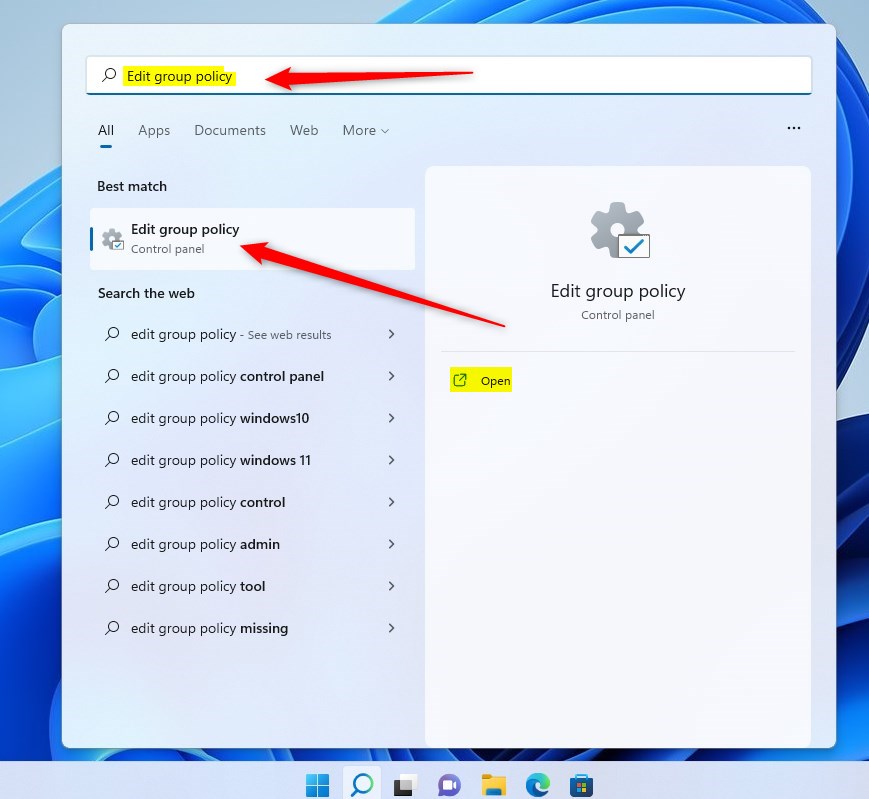
In the left pane of Local Group Policy Editor, expand the tree:
Computer Configuration > Administrative Templates > Windows Components > Windows Security > Account protection
In the Account protection details pane on the right, locate and double-click the setting “Hide the Account protection area.”
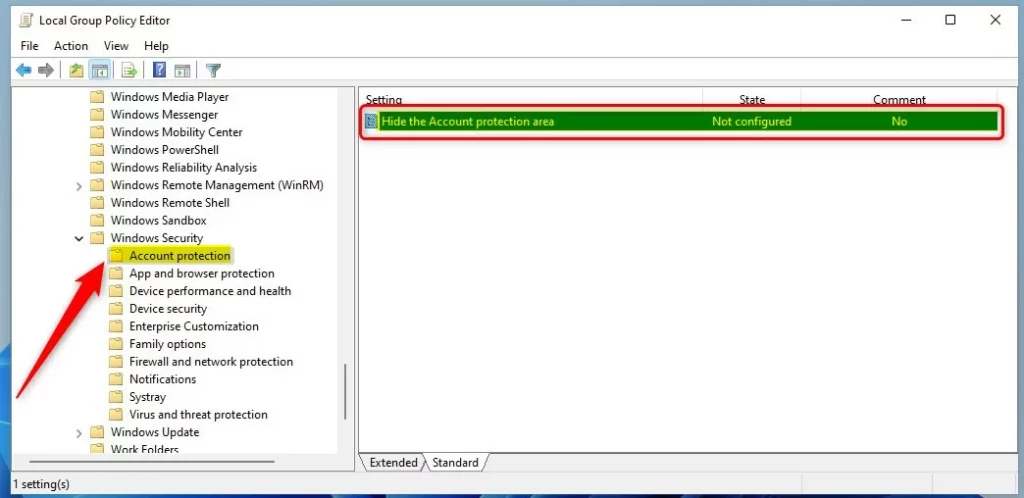
On the Hide, the Account protection area window set the option to Not Configure, Enabled, or Disabled.
- Not Configured (default)
- Enabled – The Account protection area will be hidden.
- Disabled – The Account protection area will be shown.
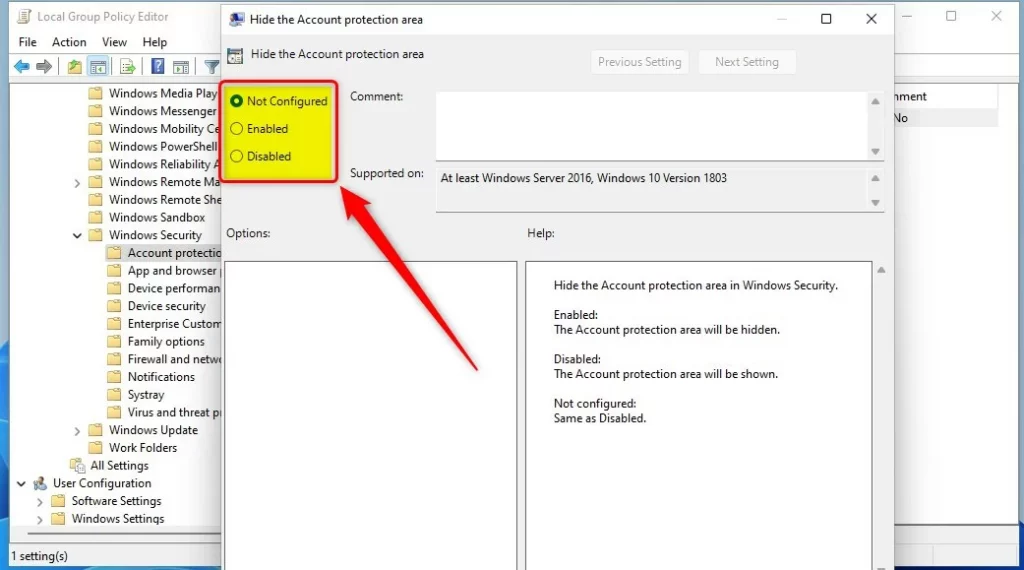
Display or hide the Account protection section in Windows Security via Windows Registry
If you can’t open the Local Group Policy Editor, use the Windows Registry instead.
Open the Windows Registry, and navigate to the folder key path as listed below.
HKEY_LOCAL_MACHINE\SOFTWARE\Policies\Microsoft\Windows Defender Security Center\Account protection
If you don’t see the Windows Defender Security Center -> Account protection folder key, right-click on the Windows key, then create both key folders.
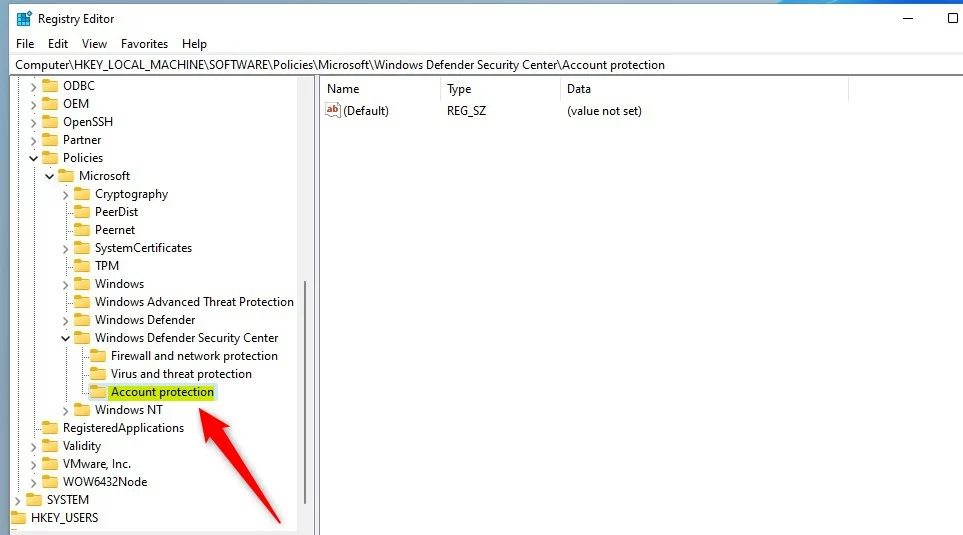
On the right pane of the Account protection folder key, right-click and select New -> DWORD (32-bit) Value. Next, type a new key named UILockdown.
Double-click the new key and enter the Value data as 0 to show the Account protection section in Windows Security app.
A Value data of 1 will hide the Account protection section in the Windows Security app.

Restart your computer, and the Account protection section will be hidden or will be displayed.
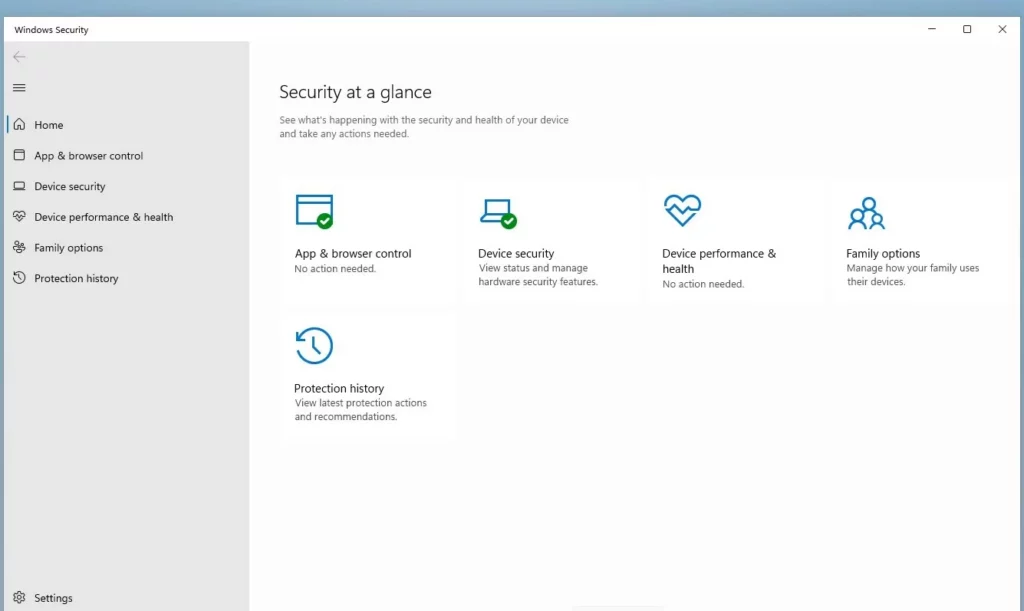
That should do it!
Reference:
Conclusion:
- This tutorial has provided comprehensive guidance on how to display or conceal the Account Protection section within the Windows Security app on Windows 11
- The step-by-step instructions cover utilizing both the Local Group Policy Editor and the Windows Registry, offering users flexibility based on their preferences and access
- Users can now effectively manage the visibility of the Account Protection section, aligning with their specific security and privacy needs
- For further assistance or valuable contributions, readers are encouraged to utilize the comment section for feedback or additional insights

Leave a Reply to Hide or Show Device Security in Windows 11 - Geek Rewind Cancel reply